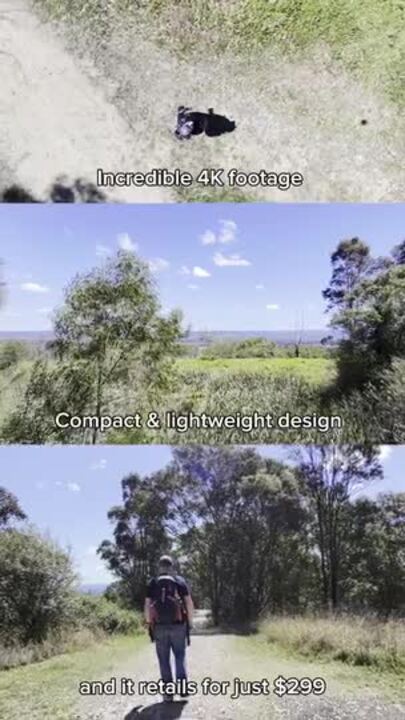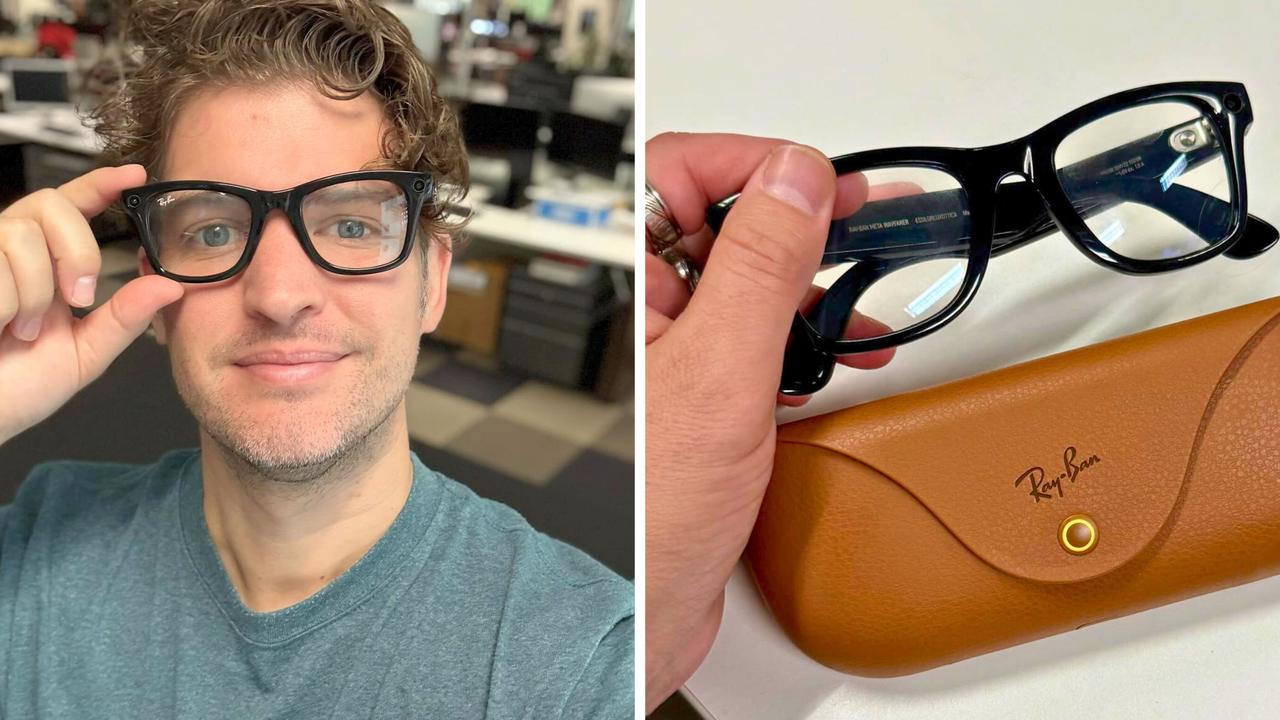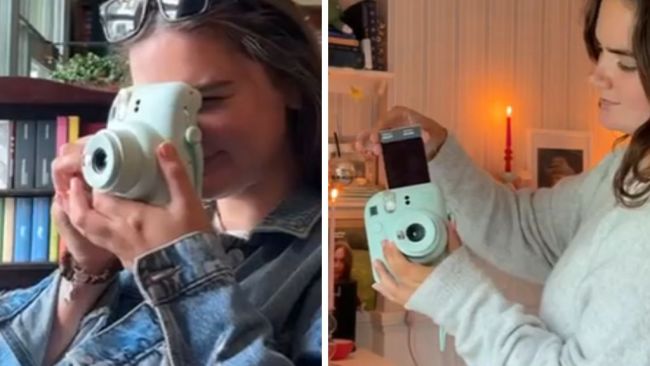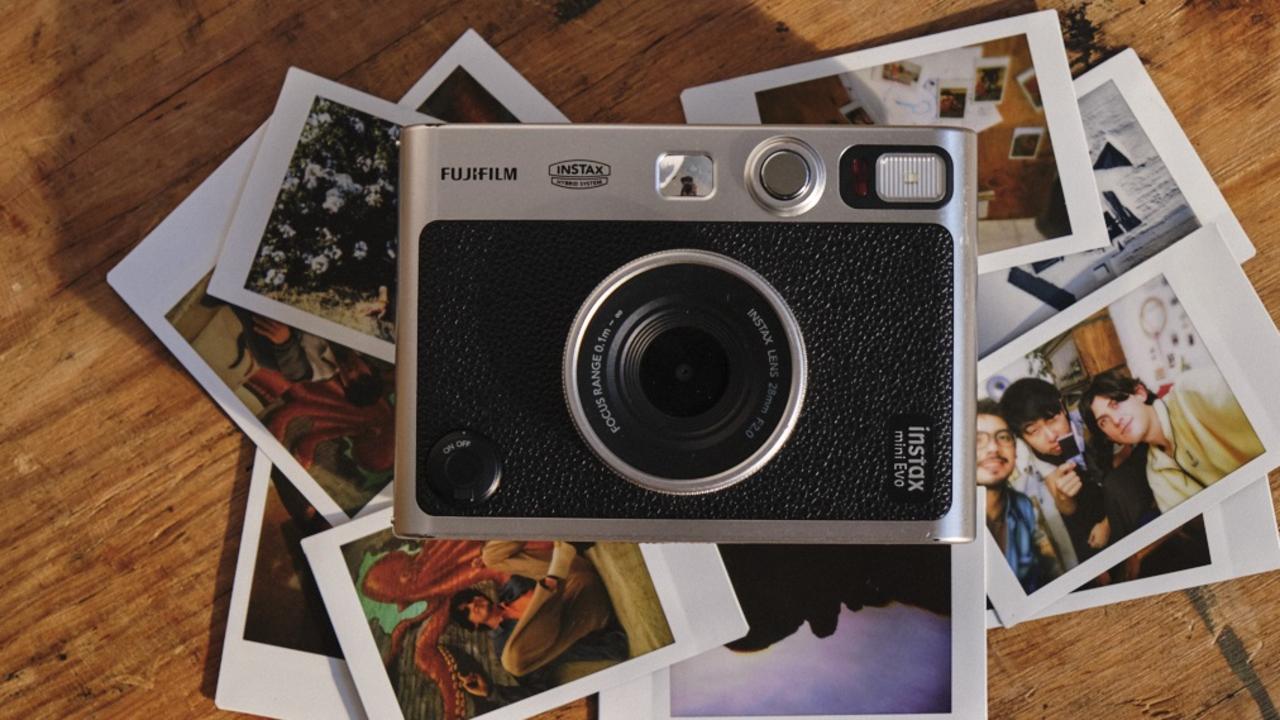6 drones that take photography to new heights
If you’re looking to elevate your content creation, these drones will help you capture that perfect aerial shot.

We may receive payments from third parties for sharing this content, and when you purchase through links in this article. Product prices and offer details are not assured, and should be confirmed independently with the retailer. Learn more
Whether you’re a novice or a pro when it comes to photography and content creation, camera drones offer an entirely new creative experience.
While some are little more than expensive toys, there are plenty of options that boast high-end camera technology, allowing you to snap and shoot unique perspectives in high resolution.
RELATED: Retro cameras shoppers of all ages love
Many drones also now include advanced features such as impressive stabilisation systems, large sensors and extended battery lives. That said, the best drone for you will likely depend on your budget and skill level.
To help you find one to suit, we’ve rounded up six of the best options available to Australians below, based on real customer ratings and our own knowledge of the products.
BEST CAMERA DRONES
DJI Neo, $289 at Amazon Australia
Tried and Tested by Nick Broughall, Technology Contributor
While there are arguably better drones on the market, none of them offer the simplicity and versatility of the DJI Neo.
The Neo is designed in a way that anybody can use it. While you can connect a traditional controller to send the drone flying through the air, its more noteworthy functionality is that you can use it without a controller at all.
At the front of the 135 gram Neo is a button that offers easy control of the six different shooting modes:
- Follow: This mode sees the Neo take off from your hand and follow you wherever you go. It will keep you in focus.
- Drone: Keeps you in the frame while moving up and away from you
- Rocket: The drone shoots up vertically, filming downwards
- Circle: Age Neo takes off from your hand and circles around you
- Spotlight: The drone will hover, and pivot around to keep you in the centre of the frame, whether you move close or further away, but doesn’t follow
- Helix: Moves in an upwards spiral, keeping you in the shot.
All of these modes are designed to capture crisp, 4K footage of a person. You hold the Neo in your hand, cycle to the shooting mode of choice with the button, then long press to activate the shooting mode.
With its 117.6 degree field of view, plus 4K video recording at 30 fps, this makes it an ideal partner for content creators. The drone itself doesn’t record audio, which isn’t a surprise given the volume of the propellers, but you can pair a DJI Mic 2 or use your smartphones’ microphone to record sound easily enough.
Each battery gives about 15–18 minutes of flight time, which isn’t very long. If you want more from the DJI Neo, the $539 RRP Fly More combo adds in two extra batteries, a two-way charging hub and an RC-N3 controller.
This controller gives you a more traditional control over the drone’s flight. It also gives you significantly more range. You can control the Neo for distances up to 10 km away, provided you adhere to the necessary regulations.
The Neo is also the first DJI drone that lets you pilot it entirely from your smartphone, using the DJI Fly app. It’s not as easy to control with a touchscreen as it is with the joysticks of the controller, but the DJI Fly app is easy enough to use, and offers the ability to customise the preset flight modes as well.
I did experience some issues trying to download my videos from the app, but I could migrate them via a cable easily enough.
It’s also important to note that the Neo doesn’t have any obstacle avoidance like more premium drones, so it can easily hit tree branches or obstacles while shooting if you’re not careful.
The DJI Neo is the ideal drone for first timers or content creators. It’s loved by customers, with an average rating of 4.3/5 on Amazon from over 400 reviews. Best of all, at just $299 RRP, it’s affordable enough to take a chance on.
DJI Mini 4 Pro, $1147 at Amazon Australia
What You Need To Know
DJI has improved the software and AI functionality of its Mini 3 drones with the Mini 4 Pro, keeping the same camera sensor as the Mini 3 Pro.
But the upgrades allow for stunning 4K video footage in HDR and 60 frames per second. There’s also an option for 4K/100fps slow motion video to capture incredible fast-moving action, while RAW image capture and 10-Bit D-Log M colour reproduction means that image quality is good enough for professional footage.
The Mini 4 Pro offers a range of up to 20 km, with a flight time of up to 34 minutes. DJI has also added in an impressive collision avoidance technology that uses four fisheye sensors to avoid obstacles in difficult flying conditions.
DJI has updated its ActiveTrack 360º technology, so you can capture incredibly stable and diverse shots of active subjects.
DJI Air 3, $1268 at Amazon Australia
What You Need To Know
Aimed as a mid-range drone between the hobbyist Mini family and the professional Mavic lineup, the DJI Air 3 is a versatile drone thanks to its dual camera design.
Like a popular high-end smartphone, the DJI Air 3 has two camera lenses: a 48MP wide-angle lens equivalent to a 24 mm lens with an f/1.7 aperture, and a 48MP 3x medium telephoto lens, equivalent to 70 mm and with an f/2.8 aperture.
This combination of lenses lets you capture stunning landscape shots with a wide angle, while the telephoto lets you capture incredible shots of your subjects.
With 10-bit D-Log M colour modes, you can get impressive HDR footage, while the Air 3 also boasts the ability to shoot 100 frames per second slow motion in 4K resolution.
Improved omnidirectional vision lets you see real-time environments around the drone for more complex shooting scenarios.
With up to 46 minutes of flight time, the DJI Air 3 is a great option to capture unbelievable footage in all kinds of environments, while quick shots let you capture epic shots quickly and efficiently.
DJI Mavic 3 Pro, $3099 at Amazon Australia
What You Need To Know
The DJI Mavic Pro 3 is immediately recognisable thanks to its triple camera system, with an epic 4/3 CMOS Hasselblad camera supported by a 3x and a 7x zoom lens combo.
The drone can record video in 5.1K resolution at 50fps, or slow motion in 4K/120fps. A Hyper-lapse shooting mode lets you record a Timelapse video with the 3x optical zoom lens to experience a unique spatial compression.
With eight wide-angle sensors placed around the Mavic 3 Pro, DJI uses advanced algorithms to automatically sense obstacles in all directions to avoid them effectively.
The 43 minutes of flight time is slightly less than the 46 minutes offered by the core Mavic 3 model, but the third lens and improved performance of the telephoto lens makes it worthy of the sacrifice.
If you want to really step up your drone videography, DJI also has a Mavic 3 Pro Cine edition, which adds support for Apple’s ProRes encoding and offers an integrated 1 TB SSD.
To be clear, this model is almost certainly overkill for anyone looking to take their first step into drone video recording, but it’s impressive in its performance.
Autel Evo Lite+, $1539 at Amazon Australia
What You Need To Know
DJI may dominate the drone market in Australia, but it’s not the only player. The Autel Evo Lite+ is an impressive camera in its own right. It offers a 1-inch CMOS sensor capable of shooting 20MP photos or 5.4K video at 30fps, or 4K video at 60fps.With ISO 64000, this drone can capture impressive video quality at night, while its three-axis mechanical gimbal means footage is smooth and stable.Autel bundles a basic remote with the Evo Lite+ that you’ll need to pair with your smartphone to control the drone, with flight ranges of up to 12 km and a flight time of up to 40 minutes.When you’re shooting at distances under 1 km, you can enjoy resolutions of up to 2.7K on your phone’s display, while it drops to 1080p from further away.While the camera on the Evo Lite+ is exceptional, the drop’s obstacle avoidance is only tracked on three axes, meaning it can still hit obstacles from above or on the side.
DJI Avata 2, $1476.73 at Amazon Australia
What You Need To Know
DJI’s Avata range of drones are designed for incredible First-Person View (FPV) racing and acrobatics. But the Avata 2 offers impressive video quality, making it a suitable option for anyone wanting the thrill of FPV flying with the benefit of detailed 4K/60fps video.
The massive 155º field of view makes it easy to capture epic low-altitude shots other drones struggle to capture. There’s also 4K/100fps slow motion recording for intense action shots.
With a custom controller that looks more like a single-handed joystick than a game controller, you can perform tricks with a single movement, like aerial rolls and 180º drifting, of incredibly fast-paced video shots. If you want more advanced controls, there’s also a more traditional FPV remote controller.
The Avata 2 has a redesigned body that makes it more robust should you accidentally crash during your flight. And if the drone happens to land upside down, it can flip itself over so you can take off and keep flying effortlessly.
There’s only a single-axis gimbal, but DJI counters this with its stabilisation algorithm, giving you impressively usable footage.
HOW WE CHOOSE PRODUCTS
Our team of experienced writers spend hours researching products to include in articles. We find out what factors make a good product by talking to experts, reviewing test results and analysing thousands of customer reviews.
AUSTRALIA’S RECREATIONAL DRONE RULES
While drones can capture some amazing shots, it’s important to remember that aerial photography can invade the privacy of others and, in some circumstances, even be dangerous. To keep you and others safe, we’ve listed the main drone rules for Australians below.
You can also head to the Civil Aviation Safety Authority section on the Australian Government website for more information.
- You must not fly your drone higher than 120 metres above ground level.
- You must keep your drone at least 30 metres away from other people.
- You must not fly over or above people or in a populous area. This includes beaches, parks, events, or sporting oval where a game is in progress.
- Respect the privacy of others. Don’t record or photograph people without their consent.
- You must keep your drone within your visual line-of-sight. This means always being able to see the drone with your own eyes.
- If your drone weighs more than 250 grams, you must fly at least 5.5 kilometres away from a controlled airport. You can use a drone safety app to find out where you can and can’t fly.
- You must only fly during the day and not through clouds or fog.
- If you become aware of manned aircraft nearby, you must manoeuvre away and land your drone as quickly and safely as possible.
- You must not fly your drone over or near an area affecting public safety or where emergency operations are underway.
- If you intend to fly your drone for or at work (commercially), there are extra rules you must follow. You will also need to register your drone and get a licence or accreditation.
More best tech coverage











